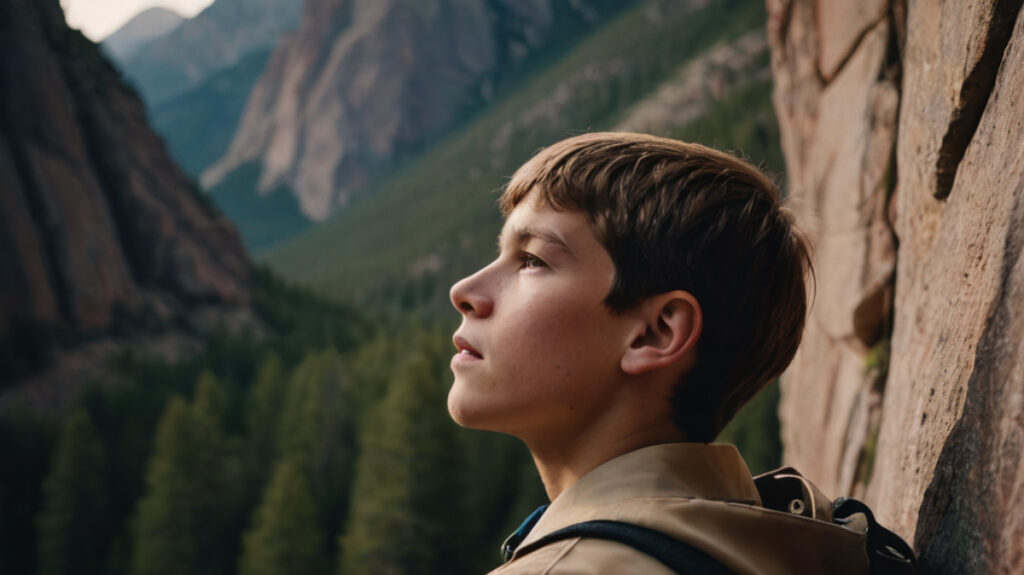
To get started with this online course, click the Curriculum tab above. From there, your scouts should start with the first lesson: Intro & Quiz. This will give them access to their quiz so they can verify their understanding of each lesson requirement. It’s important to complete this quiz BEFORE the scouts arrive at Übergrippen for their class.
If you have any questions, please reach out to us at events.cr@ugclimbing.com
Curriculum
- 3 Sections
- 28 Lessons
- Lifetime
- Preliminary SkillsPreliminary skills that are helpful for understanding before getting into climbing & repelling.11
- Hand-on Climbing SkillsThis section will help you understand how to manage & use your climbing gear and an introduction to climbing, belaying, & repelling.14
- In-Person Class Expectations3
There are two parts - an online portion with a quiz, as well as an in-personal lessons to give you the opportunity to climb, belay, & repel.
The online portion may take you 1-2 hours to work through the online lessons and videos and take the quiz to show that you have a good understanding of the materials.
The in-person portion that you'll take at one of the Übergrippen facilities is a 3-hour class. Make sure you book the class ahead of time!
Requirements
- 1. Do the following:
1a. Explain to your counselor the most likely hazards you may encounter while participating in climbing and rappelling activities and what you should do to anticipate, help prevent, mitigate, and respond to these hazards.
1b. Show that you know first aid for and how to prevent injuries or illnesses that could occur during climbing activities, including heat and cold reactions, dehydration, stopped breathing, sprains, abrasions, fractures, rope burns, blisters, snakebite, concussions, and insect bites or stings.
1c. Identify the conditions that must exist before performing CPR on a person. - 2. Learn the Leave No Trace principles and Outdoor Code, and explain what they mean.
- 3. Present yourself properly dressed for belaying, climbing, and rappelling (i.e., appropriate clothing, footwear, and a helmet; rappellers can also wear gloves).
- 4.Climbing Area:
4a. Explain how climb difficulty is classified and apply these classifications to the rock faces or walls where you demonstrate your climbing skills.
4b. Explain top-rope climbing, lead climbing, and bouldering.
4c. Evaluate the safety of a climbing area, considering weather, visibility, surface condition, and environmental hazards.
4d. Determine how to summon aid in case of an emergency. - 5.Verbal Signals: Explain the importance of verbal signals and demonstrate them for climbers, rappeler's, belayers, and boulderers with their spotters.
- 6.Rope:
6a. Describe acceptable ropes for climbing and rappelling.
6b. Show how to inspect a rope for wear or damage.
6c. Discuss ways to prevent rope damage.
6d. Explain when and how to retire a rope.
6e. Properly coil a rope. - 7.Knots:
Demonstrate tying the following knots and their uses in climbing:
Figure eight on a bight.
Figure eight follow-through.
Water knot.
Double fisherman’s knot (Grapevine knot) - 8.Harness, Helmet & Gloves:
Explain the purpose of each of the following and demonstrate how to put them on correctly.
8a.Harnesses
8b.Helmet
8c.Gloves - 9. Check System:
Identify the elements of the CHECK system and describe the meaning of each one to your counselor. - 10.Belaying:
10a. Explain the importance of belaying climbers and rappeler's and when it is necessary. - 11.Climbing:
11a. Show the correct way to tie into a belay rope. - 12.Rappelling:
12a. Using a carabiner and rappel device, secure your climbing harness to a rappel rope. - 13.Gear Storage:
Demonstrate ways to store rope, hardware, and other climbing, rappelling, and belaying gear.
Features
- Learn within our online class all the foundational skills you need for this merit badge.
- The 3-hour class at Übergrippen will get you climbing, belaying, and repelling!
Target audiences
- This is for youth looking to earn their Climbing Merit Badge.